Most primitive tribal armies consist of militias which contain all adult males of the group. In such cases, there is no distinction between civilians and soldiers, and peacetime leaders are also wartime commanders. In such groups, assuming a role of a warrior was often the only way to achieve recognition as an adult. When war broke out, the entire tribe put itself onto war footing and fought in the same organization and under same leaders it had in the peacetime.
Pre-feudal (tribal) state may have regional organization of its military. In England, fyrd system was established by Alfred the Great, King of Wessex. Kingdom was divided into 33 regions, and each region was able to raise a regional levy (fyrd) for self-defense. They also collected taxes which were used for maintenance of the central army. Similar system but without the central army and based around tribal levy was employed in medieval Croatia with its provinces (županija), and king Tomislav was said to have been able to raise 100 000 infantry and 60 000 cavalry that way (though numbers are highly questionable, it is clear that the military power of Croatian Kingdom had been considerable, and declined significantly as tribal levy declined). Anglo-Saxon fyrd required sophisticated administrative apparatus, much like Byzantine themata, leading to both states being considerably more centralized than majority of European states. These systems were highly effective, because soldiers were both integrated into the community as well as highly valued by the community as such – similar example can be found by the US National Guard units, which often perform better than their regular army counterparts. Fyrd armies were organized by shire, hundred and soke, and must have had units of relatively regular size. Soldiers of fyrd were also similar to those of themata, as each soldier was supported by a group of households.
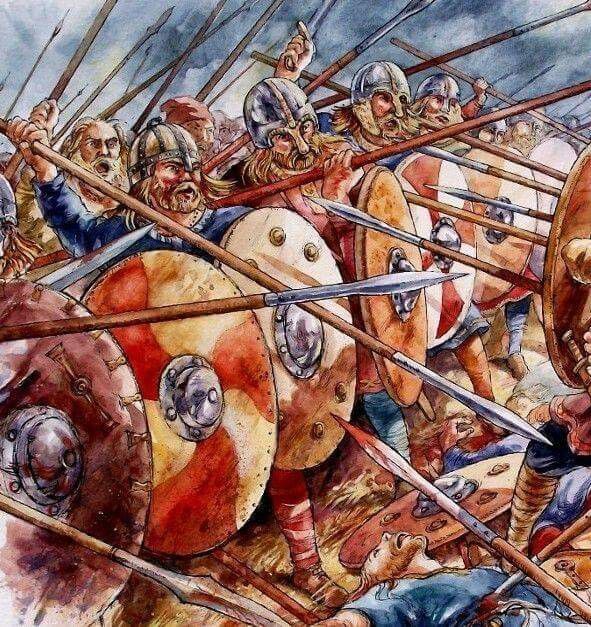
While tribal armies were not raised through feudal system of retinues, these did exist. These were supported by the king and other high nobles, and acted as bodyguards for important people – such as village and tribal chiefs. As such, they formed the core – the most capable part – of the tribal armies. Anglo-Saxon huscarls were such retinue and they acted as a core of an expeditionary army, while majority of manpower was provided by the fyrd levies. Oftentimes, members of these retinues were mounted and formed the core of the later feudal knightly class. Smaller landholders were grouped with these retinues tactically, even if they were not socially subordinated to the magnates (which they often were, and this in turn led to feudalism). Below them was a select levy, which was raised in the manner similar to the select levy of Frankish Empire and thematic soldiers of Byzantine Empire, with each soldier being supported by a family or a group of families (thus similar to Hungarian militia portalis). Such levy often served on a rotating duty in fortresses. This was supplemented by a general levy, which consisted of all free men and was not a field force but rather local defense militia supposed to hold the walls and nothing else – anyone capable of wielding a sword (similar to Hungarian exercitus generalis). General levy was never deployed in the field, as even the troops of select levy would easily dispose of them; full-time soldiers were no contest. Frankish system, as noted, functioned in a nearly identical manner. Magnates’ retinues were full-time soldiers, while the select levy were part time soldiers, but very much not “conscripted peasants”. Both magnates’ troops and the select levy could stay in the field year-round, while general levy (or great fyrd) could only be raised for local defense and for a short time – generally outside the harvesting season.
City-state militias were in a sense similar to tribal armies as they were raised among all free members of a society. Serving in the military was a mark of citizenship, but this also meant that organization was often lacking. While highly motivated, Greek hoplite armies were essentially unguided shells, “point at the enemy and pull the trigger” type. Battles consisted of smashing one’s own blocks of men into enemy’s blocks of men, and whoever wavered the first, lost. For hoplite armies, even simple flanking attacks were on the level of quantum physics. Instead, they relied on the cohesion and discipline instilled by the communal feeling. While adequate in open field battles (depending on the conditions), this made them rubbish at assaulting cities.
Feudal army is a retinue of retinues. Feudal system is based on the senior-vassal relationship, where vassal oves allegiance to his senior. This extends to the military organization itself. King was the ultimate senior, and he had his vassals. These vassals called upon their vassals, who had vassals of their own, and so on until the end of the chain with the common person. Military was raised by calling upon the vassals. Noble’s army was a combined retinue of his retainers, and a kingdom’s army was a combined retinue of all retinues. Service was conditional. In English system, retainers served for 40 days a year. In Hungarian system, king was able to call on nobles’ armies whenever he wished to, but only so long as the army was deployed within borders of the kingdom. Any campaigns beyond had to be financed by the crown through a system of dispositio, which was in fact basically identical to the English indenture system. In that system, king paid for a given number of lances (basic tactical units – a knight and his retainers) for the baronial contractor. Due to Ottoman pressure these units had to be kept under arms nearly permanently, with the result that Kingdom of Hungary had had a de-facto standing professional army since the first decades of the 15th century. In the second half of the 1410s, Sigismund contracted with those in charge of the border from Transylvania to Temes for the maintenance of a total of 2 200 lances. Another group of barons was required to keep 450 lances in arms in order to help the first line if necessary. It was also after the catastrophe at Nicopolis that Sigismund introduced the militia portalis, which will be described in more detail in section about basic recruitment.

Even within the feudal system, an army can be more or less organized. Medieval Hungarian army was organized into banners (banderium), which was a term that actually denoted two things. First, it denoted a group of soldiers raised by any given noble or a magnate, which was raised under said magnate’s flag. Second, it denoted a group of 400 soldiers. As a result, Janos Hunyadi’s banderium was in fact comprised of several banderia. Nobles which were not powerful enough to raise a banderium on their own would instead send soldiers to banners of counties. This had advantage in that it resulted in a relatively professional and highly structured army at very low overhead cost. Units were maintained by nobles, while at the same time standardized tactical and administrative organization – since size of nobles’ banners had no relation to size of tactical battlefield banners – meant that armies fielded could easily number into tens of thousands. Typical army was around 20 000 strong, while largest armies reached up to 60 000 men. These armies were also capable of campaigning year-round, as can be seen from 15th century Hungarian campaigns. Long March lasted from July 1443. to late January 1444. (army had crossed into Ottoman territory in mid-October, and returned to Belgrade on 22nd January). The Varna Campaign started on 20th September from Orflova, reached Nicopolis on 16th October, and fought battle at Varna on 9th November. This was made possible by both the banderial system itself and the wagenburg tactics of Hungarians. System also provided for rotating garrisons of border fortresses, creating in effect a permanent standing army as early as 1420s. Main disadvantage of banderial system was political: nobles were not interested in defense until they themselves were threatened, and instead mostly used their private banderia to beat up each other. As a result, military potential of the kingdom could never be fully mobilized, except for frequent civil wars. King Matthias did pay Croatian counts to maintain cavalry troops on the permanent war footing, but this was only a minor part of the total armed force of the kingdom. By 1501-2., standard unit of Hungarian army was six light cavalry for one man-at-arms and one wagon, according to the Venetian envoy.
But banderial army is not always so standardized. The reason standardization could be enforced lied in a relatively centralized nature of Hungarian monarchy. In a purely feudal state, each banner will be sized according to the power and influence of the lord which had raised it, and will depend on size and number of banners of nobles serving under the lord in question, and so on (as each lord’s retinue depends on number and size of his vassails’ retinues). This naturally plays merry hell with any kind of logistical planning, with the result that armies thus fielded are relatively small. Where Hungary raised armies of cca. 20 000 at the drop of a hat and could raise 60 000 – 70 000 in need, English armies of Hundred Years War numbered typically 15 000 – 20 000. It should be noted that these were two among the best-organized states in medieval Europe: most other states would likely not have been able to field such large field armies. Nature of banderial system also meant that there was a constant low-level warfare between lords maintaining the banderia, involving dozens or hundreds of men in each battle.
Banderial system also has disadvantage in being almost exclusively cavalry-focused. Majority of Hungarian infantry was not professional, and Emperor Sigismund when reforming banderial system in 1432. predicted being able to raise around 80 000 cavalry in Hungary and Croatia, but next to no infantry. Uniform, drilled infantry existed, but was rare and mostly existed in the context of mercenaries or free cities – two systems that are decidedly not feudal in their nature. This did change with time, and Hungarian armies started including more and more infantry as 15th century wore on, but this infantry was always in a supporting role, and high-quality infantry such as pikemen were exclusively mercenaries (Matthias Corvinus relied heavily on the Swiss).
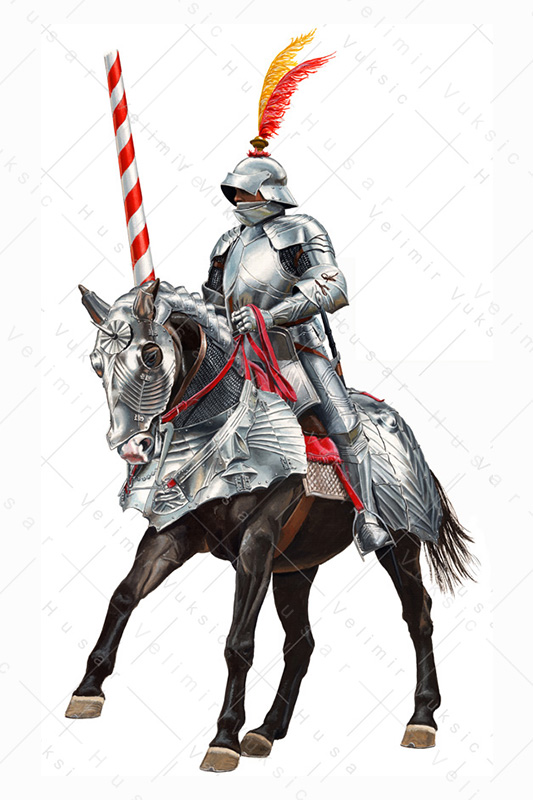
Fact is however that banderial system was one of better organized feudal military systems, and even it was far from ideal. While battlefield units were of a standardized size, fact that they were often comprised of several different retinues meant that soldiers were not used to working together, unlike professional soldiers in Byzantine and Ottoman armies. And contract of indenture was inferior to banderial system – while banderial system meant recruiting groups of soldiers through contract with their liege lord, which would then be organized into battlefield formations, indenture system (as used in England) was done on an individual basis, as contractor would find the troops willing to serve and contract with him. As a result, troops would take time to get used to working together, and armies were always ad-hoc formations. The exception to this rule were lords of the Outremer during Crusades, who had highly disciplined and tactically sophisticated military, with professional cavalry and infantry. But as with other feudal forces, providing numbers for a field battle meant stripping garrisons, which then led to massive territorial losses in the case of a major defeat.
Politically, banderial system allowed for a local defense, but a major offensive required king’s presence as lords were only beholden to the king – even if a lord was appointed an overall commander, there was no guarantee that other lords would listen to him; even the king was not always obeyed. But even there Hungary had an advantage in that southern marches of the kingdom were under authority not of large magnates, but rather of royally appointed officials. While politically exhibiting even greater autonomy than rest of the kingdom (Croatia and Slavonia were in fact parts of sovereign Kingdom of Croatia which was in personal union with Hungary, while Transylvania consisted of seven noble counties and autonomous districts of Saxons and Szekelys), militarily they were subordinated not to nobility but to holders of royal offices: bans of Dalmatia-Croatia, Slavonia and Macso, and voevoda of Transylvania. The voevodate of Transylvania served as a basis of two national families who ascended to the throne of Hungary in the 15th century: Hunyadis and Szapolyai. Eventually, many of the larger noble banderia also came to be stationed along the southern border on an effectively permanent basis.
More centralized state can have military that is organized regionally. This was the case of the Middle Byzantine Empire with its thematic system, as well as with stem duchies of Kingdom of Germany. Such organization allowed a highly professional army to be supported at relatively low cost, while also stiffening the resistance of the populace as a whole. In Byzantine Empire especially, combination of semi-professional landowning troops in the provinces (themata) and fully professional central tagmata allowed for a highly motivated and effective army that was still relatively cheap to maintain. Tagmata served as insurance against rebellious themes, but also as a center point of an expeditionary army: if the enemy was too strong to be handled by local thematic forces, tagmata – alerted by the Byzantine beacon system – would set out in force, collecting local thematic forces along the way. One consequence of this organization are pronounced regional and local identities and loyalties. This helps improve cohesion within the unit and between the unit and the local society, making resistence much stiffer, but at the same time also presents a danger to the central government.
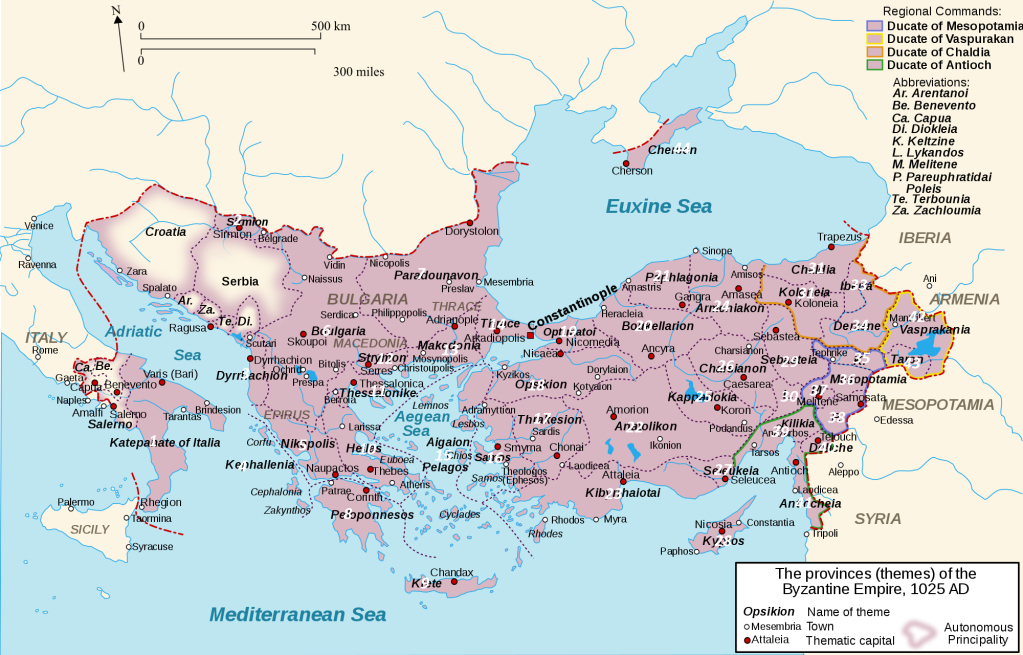
In a federal state, each federal unit (state) will have its own army, which will typically vary in strength. As an example, Army of Holy Roman Empire had 12 000 cavalry and 28 000 infantry in 1681. But numbers supplied by each circle varied from less than 2 000 to over 8 000, with no standardization in units. While Austrian Circle had 2 552 cavalry and 5 507 infantry, Frankonian Circle had 980 cavalry and 1 902 infantry. Other circles had similarly random numbers. For comparison, while Byzantine army was also organized on the territorial basis, more centralized nature of the Empire meant that each theme could have a relatively standardized number of troops (originally, in integers of 5 000 as those were standard Byzantine divisions before the Muslim conquests).
Fully professional army can have the most varied organization as it does not need to reflect the society it sprung from. What is common to all professional (and mercenary) armies are the complex layers of hierarchy, required to essentially reconstruct the society within the military itself. This leads to high capacity for complex maneuver warfare, but also to vulnerability to attrition. Same factors which allow it to deploy in large numbers and over long distances and periods of time also mean that it is less capable in stiffening local resistance against e.g. raids. And the fact that the entirety of hierarchy is artificially constructed means that it requires quite a few officers – much more than other types of armies. Consequence of this however is that it is also much more capable of maneuver warfare, assuming that its organizational culture actually supports such approach.
Generally, more focused an army is on maneuver warfare, greater the number of subdivisions. Macedonian phalanx had basic unit of syntagma, formed of 16 files of 16 men each (total of 256 per unit). Basic unit of Roman army was a maniple of 120 men, which was later reduced to 100 and then 80 men centuries, divided into 10 or 8 man decuries. Centuries were grouped into cohorts of 480 men and cohorts into legions of 4 800 men. Basis of organization was thus 10, though for cohorts basis was 6. In Byzantine themata however, each unit had between 2 and 6 subordinate units (10 kountobernia to a kentarchia, 2 kentarchia to a bandon, 2 banda to a droungos, 6 droungoi to a tourma), though exact structure changed over time. As it can be seen, a unit of a 1 000 men had two organizational levels in Macedonian army (file and syntagma), three levels in Roman legion, and four levels in Byzantine theme (specifically, Thrakesion). A unit of 10 000 men will have had four subordinate levels in Roman and six levels in Byzantine army.
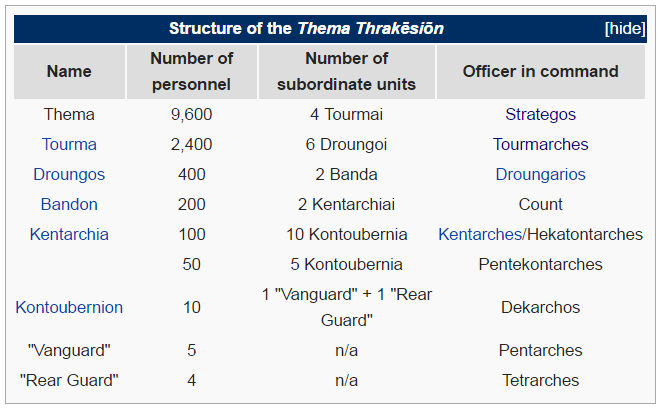
Each unit would have a leader. In a more organized military, such as Roman or Byzantine ones, a unit commander also had an assistant (XO), who helped manage the unit. Commander of unit gives tasks to his subordinates as necessary, which is the reason for increased depth of the command structure as requirement for maneuver increases – fewer subordinates means that commander is better able to see what is going on and give orders. Armies less professional than those of Rome (and Byzantium) generally did not develop formal military ranks above the voice-command level (cca 100 soldiers), but leaders were assigned ad-hoc, typically based on the prestige of the noble’s title. Roman and Byzantine armies, with their developed system of command and control which included flag signals, had formal ranks up to the level of 5 000 men (Roman legio commanded by a legatus, and it corresponded to Byzantine meros, with commander merarch. Later Byzantine thema could be 10 000 strong or more and also had a permanently appointed commander).
Professionalization of the army can have negative impact on the society, especially if it happens in the form of mercenaries. Mercenaries have no connection – emotional or otherwise – to the society they are defending. As a result, they could become as great of a danger as the enemies: there were more than a few cases where mercenaries without pay started looting the population, or else went over to the enemy. This was especially true in 16th century and later, when armies – mercenary and professional alike – increased to massive sizes, and thus devastation of the countryside became a logistical necessity for the army to survive. During the Eighty Years War, Spanish armies sacked Antwerp – the local seat of Spanish government – to recover their arrears in pay. In the process, thousands of inhabitants were killed. But even domestic professional army can have a similar effect – just a cursory look at the timeline shows that civil wars in Rome only really jumped off after Marius’ reforms and professionalization of the army, and these armies certainly were not above sacking Rome’s own cities, especially during civil wars, as seen during sack of Cremona.
A society could deploy one or more types of an army. Byzantine Empire had full-time professionals of the central tagmata while themata were part-time professionals serving in the provinces. 15th century Kingdom of Hungary had even greater array of forces: full-time professionals in the form of mercenaries (which would eventually become the Black Army), part-time professionals of feudal banderia, the select levy of militia portalis, and the general levy of the generalis exercitus. The generalis exercitus was militarily useless by 14th century and was called for the last time in 1439., reason being that the lesser nobility which had been the basis of the system were absorbed into the peasant class. Instead, it was replaced by the militia portalis.
Lastly, all of the above systems might include auxilliaries and mercenaries. While Roman term auxillia has a very specific meaning (and in any case, Roman auxillia later became standardized light infantry, contrasting the standardized heavy infantry of the legions and the nonstandardized native auxillia of foederati), in Middle Ages (and generally) it refers to allied forces that are subordinated to the main army (while being structurally distinct from it). These were often used to provide kinds of troops which native military system was ill-suited at providing: such as Balearic slingers and Hunnish mercenaries in the Roman Empire, Turcopoli in Byzantine and Crusader armies, Italian crossbowmen in French armies of Hundred Years War, Szekely and Cuman light cavalry in Hungarian armies of 15th century, Swiss pikemen in the armies of Matthias Corvinus, and so on. In a feudal system, auxilliaries often came from the towns and provided the types of troops in which purely feudal armies were deficient: namely, high-quality infantry (especially heavy infantry and crossbowmen). Due to different fighting styles (and often language) they formed their own units, fought under their own leaders and used their own tactics and equipment. As a result, auxilliaries might differ from the core army in essentially every factor noted throughout this series. In some cases this culture clash resulted in a disaster (as at Crecy with crossbowmen), but in others presence of auxillia and mercenaries could also help reinforce responsible practices in the core army (as in the case of Hungarians, whose tactics remained very cautios due to a combined effect of presence of mercenaries and having to fight horse nomads). This however was only true as long as the auxilliaries were a separate element. If they were merged into the core army, they had to be merged completely, thus losing their distinctiveness, or end up losing their combat value as subordination to the main element destroys their cohesion.
Image 1: Roman auxilia, Image 2: Ming auxilia, Image 3: medieval mercenaries
In fantasy, if there are races or sapient species other than humans present in a human-majority kingdom, they may be utilized as auxilliaries. In such a case, humans would form the core of the army – heavy infantry and cavalry – while other groups will be attached to this core in their own units, utilizing home-grown tactics. Kingdom could thus use dwarven mercenaries for securing underground areas, or elven mercenaries for fighting in a forest. Same applies to those races themselves: instead of utilizing chariots and pigry, dwarves would more likely contract human mercenaries or else call upon allies to provide cavalry for open-field battles. Elves likewise might ask allies to provide heavy cavalry or infantry, assuming they already don’t have such.
Yet if they were not integrated enough, presence of mercenaries and auxiliaries could spell disaster. Byzantine army at Manzikert was, for all its flaws, Romanos’ strategic and tactical mistakes, and subordinate’s treachery, only destroyed when its multiethnic and insufficiently coordinated troops botched a counter-march orders. With large gaps appearing in Byzantine formations, Seljuk cavalry exploited the opportunity, charged, and utterly annihilated the Byzantine center.
Most effective medieval field armies were made up wholly of mercenaries. But situation is not always clear cut as to the exact nature of the mercenaries and the armies they made up. Such was the case with early armies of Janos Hunyadi and the Black Army of Matthias Corvinus. While consisting exclusively of mercenaries, these mercenaries were predominantly Hungarians, and thus really represented a national army of the kingdom. Yet they were not a national standing army as understood today – they were still mercenaries, and were paid by the campaign with the result that their numbers fluctuated according to the needs.
No matter the organization, political leadership of the country is also the overall leadership of the army. In a fantasy setting, this typically means a king, duke or whatever title ruler of the country goes by. This also impacts organization of the army, as organization will follow the personality and political requirements of the leadership. In a monarchy, important question is whether ruler personally leads the army or merely provides policy objectives. Generally speaking, more personal style of leadership as well as greater importance attached to warfare in terms of prestige both make it more likely that political leaders will be militarily active.
They however also make it more important that the leader is militarily competent, which is far from given. Generally the best results in such a situation would be in a situation akin to Byzantine themata or early Roman provinces, where military commanders are also civilian governors of the area, and leadership of the state is drawn from the high levels of military command – who, as noted, already have experience in civilian governance as well. Feudal system also makes it possible – but by no means certain – that ruler will have some military experience and ability. Even in such systems it is possible for ruler to be a young (or very old) person, and thus prone to making mistakes. A defeat that might be simply shrugged off in the case of a true and tested leader might provoke a rebellion if ruler is a novice. Basil II. faced a rebellion as a direct consequence of his defeat at the Battle of the Gates of Trajan, whereas John Hunyadi suffered several defeats without serious internal consequences because by that point he was already acknowledged as a competent administrator and military commander. However, if a ruler is the son of an already popular military commander, it can help secure the rule: as seen with John Hunyadi’s son, Matthias Corvinus.
For this reason, many rulers avoided leading campaigns in person if such an option was available. Augustus, after becoming an Emperor, generally gave commands to his subordinates. This allowed him to own the successes, but palm off responsibility for defeats onto his subordinates. Early Byzantine emperors also followed this pattern. But in terms of extreme external danger, rulers were often forced to take the field despite the political dangers it implied. As Roman Empire fell into the Crisis of the Third Century (235. – 284.), it gave rise to a series of “barracks emperors”, rulers who achieved the throne by virtue of their command of the army, and who continued to lead military campaigns in person. Last of those, Diocletian, ended the crisis. But even his successors were all known military leaders – Maximian, Galerius and Constantius Chlorus were Diocletian’s own colleagues from the army. Constantine received tuition under Diocletian himself, and also served as an army tribune in campaigns against barbarians and Persians. As the imperial office stabilized, emperors again grew disconnected from the army. This however led to their retreat into irrelevance when crisis renewed itself: while emperors still served as a public face, real power was held by the army commanders such as Stillicho, Constantius III., Flavius Aetius, Ricimer, Gundobad, Orestes and Odoacer. In the East, Emperor Zeno managed to avoid this fate by a hairsbreadth. Even he himself was originally a general of the army. Barbarian general Asper had been controlling the throne, and originally named Leo – a 53-year-old member of his staff – an Emperor. Leo went out of the control and curbed Germanic elements in the army by replacing them with Armenians, who would continue to be the backbone of Roman army until 11th century. He was succeeded by Zeno, now free of Germanic control.
A young or novice ruler may turn to his relatives and to experienced generals to lead army and perhaps also carry out many administrative tasks. But this, especially in the absence of strong administration, creates a situation ripe for a coup. Possible solution is to have an army loyal to the throne itself: in a premodern society, oaths of fealty actually meant something, though this too obviously varied. Varangian Guards of the Byzantine Empire, as well as its tagmata, were loyal to the throne and thus served to counterbalance the threat of powerful provincial armies. There are other solutions as well, but these are very problematic:
- Army might be stationed far from the seat of power, as was done in the early Roman Empire – but this means that there will be nothing between the throne and whatever threat passes the borders, or if the army itself becomes a threat (as was displayed with the civil war which made Vespasian an emperor).
- Relatives might be depended on to lead an army. This was a frequent solution, and typically worked rather well, but it could also backfire if a relative cared more about his ambitions than his family.
- Uninspiring generals will not be able to inspire a rebellion – but they will also not be able to inspire loyalty or performance of the army, either. As a result, army set up solely to ensure its loyalty will fall apart in face of any sort of external pressure (example: Saddam Hussein).
- Culture can also help counter a coup, if doing so is seen as dishonourable and against social norms.
Subordinate leaders loyal to the state may counter commander’s rebellious tendencies, but if they are paid by the commander, they will support those tendencies – and may even make them more likely.
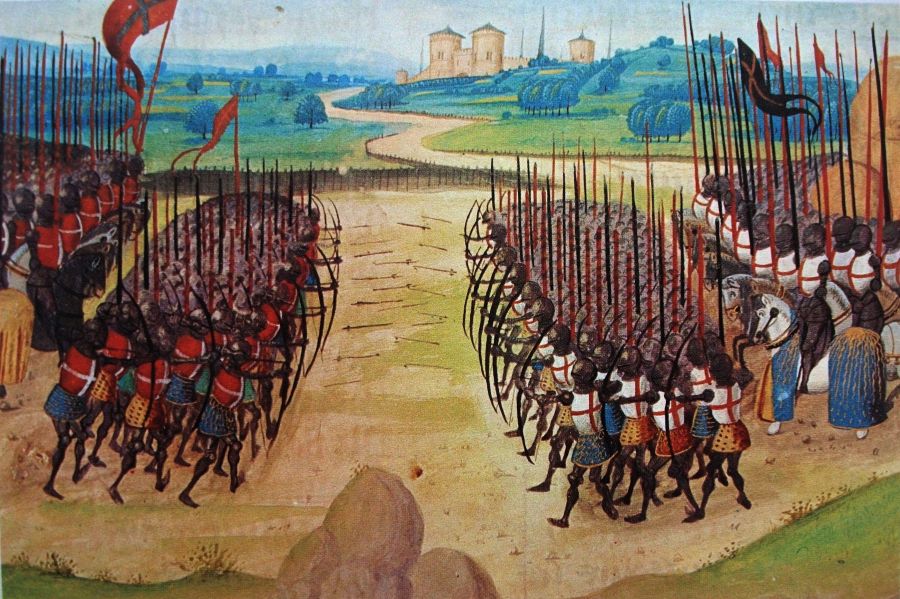
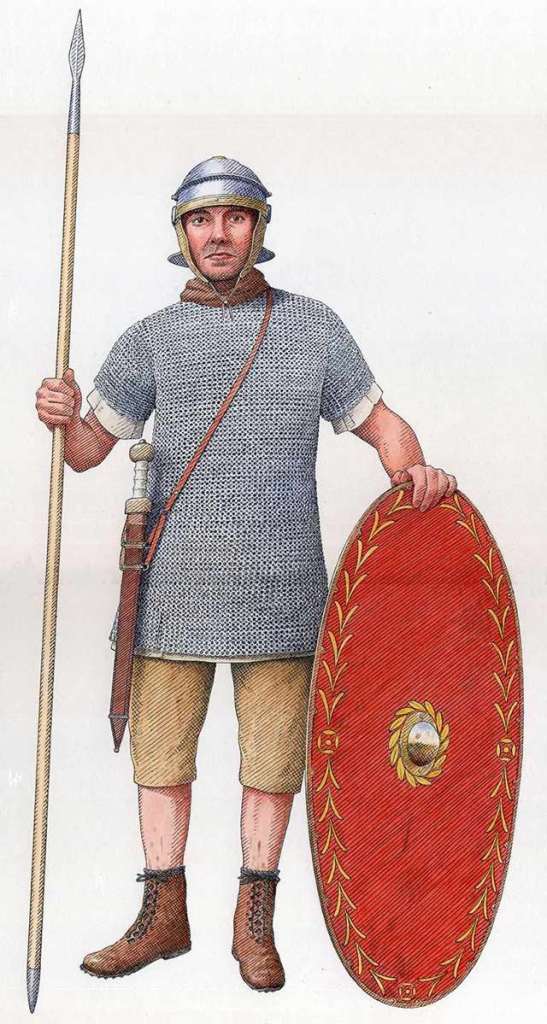
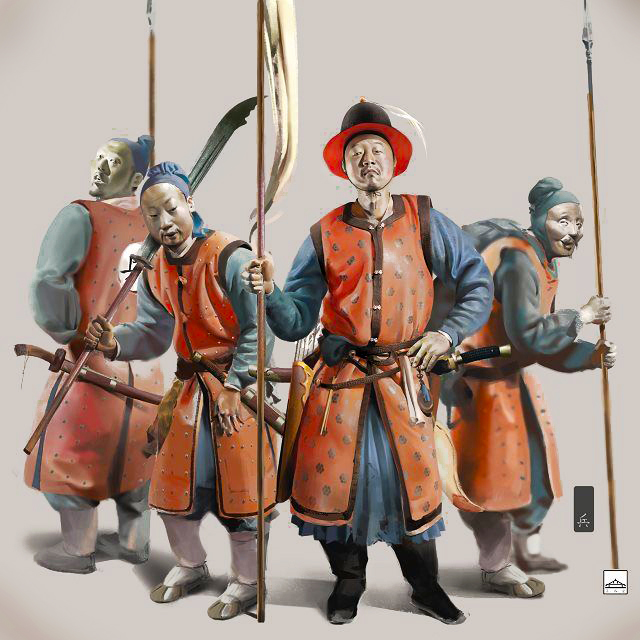
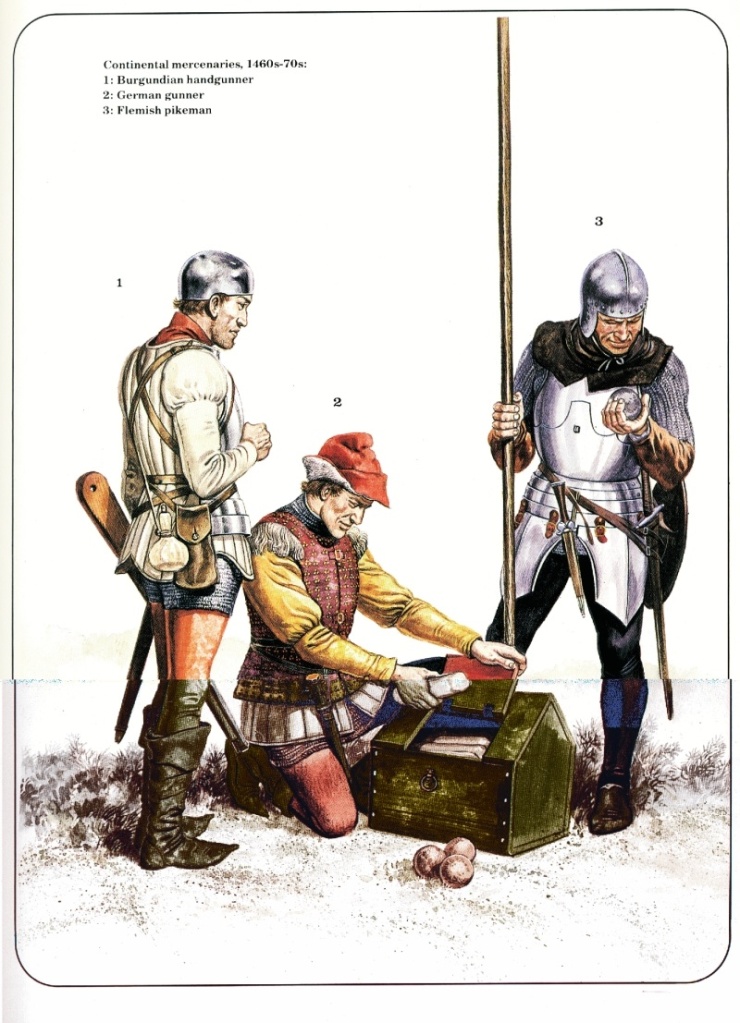
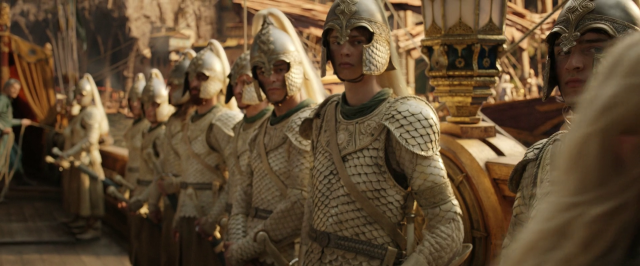
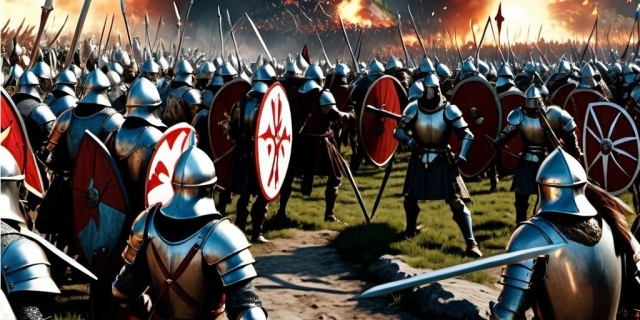

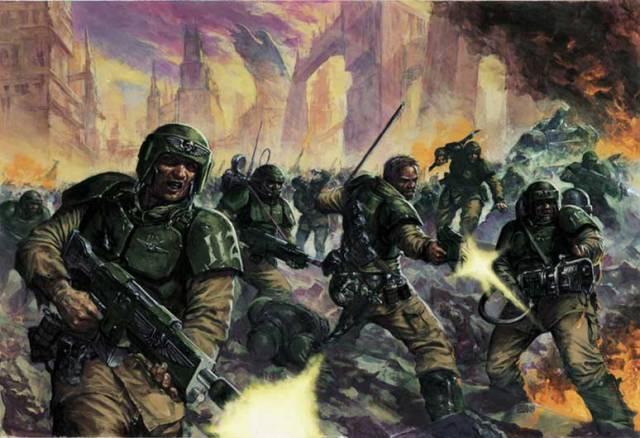

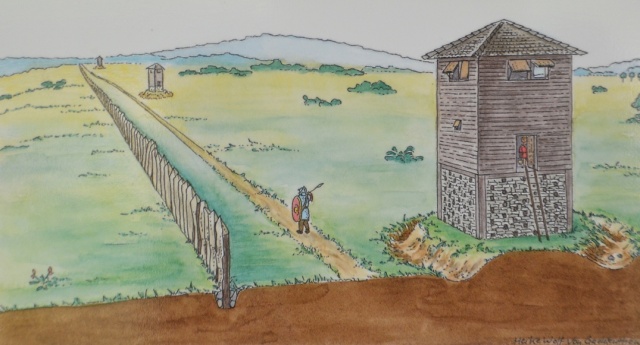
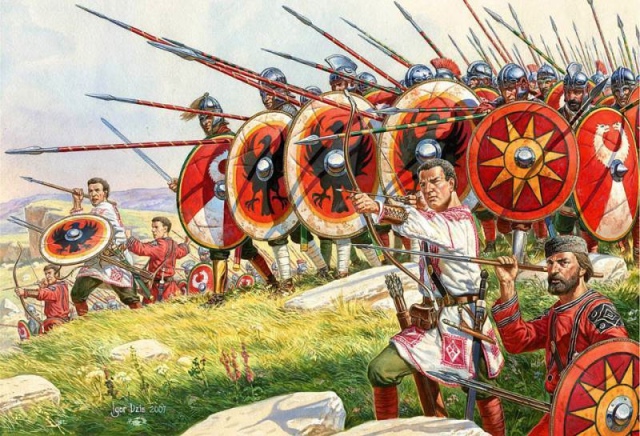
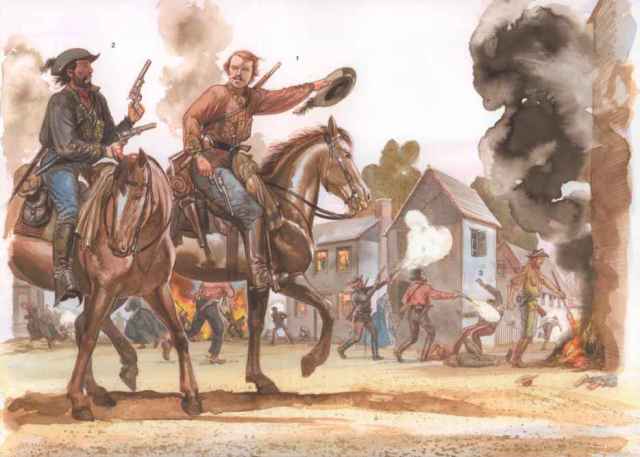
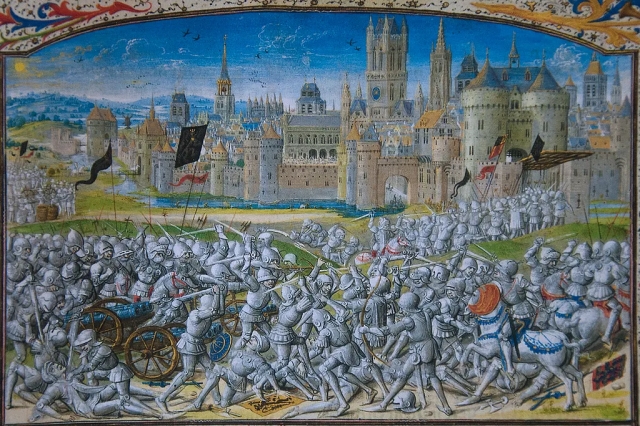
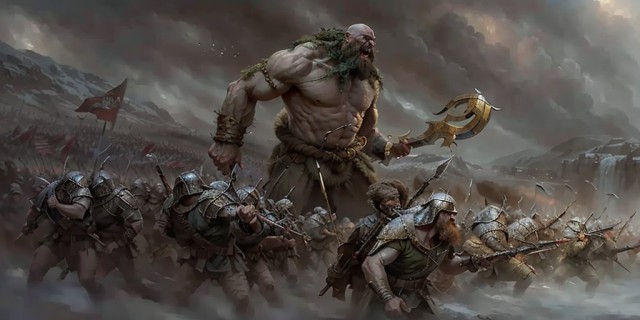
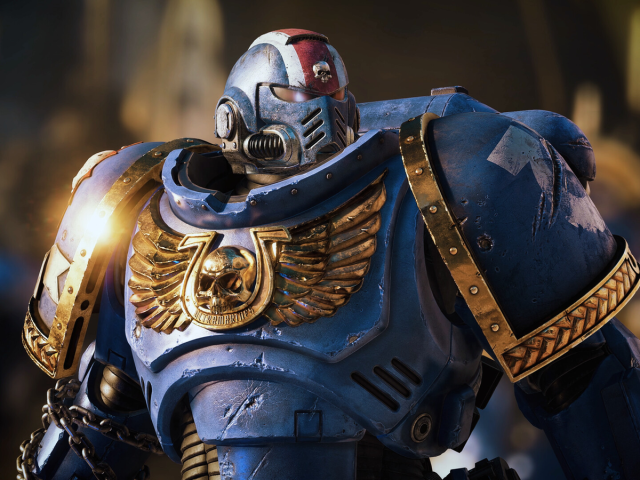

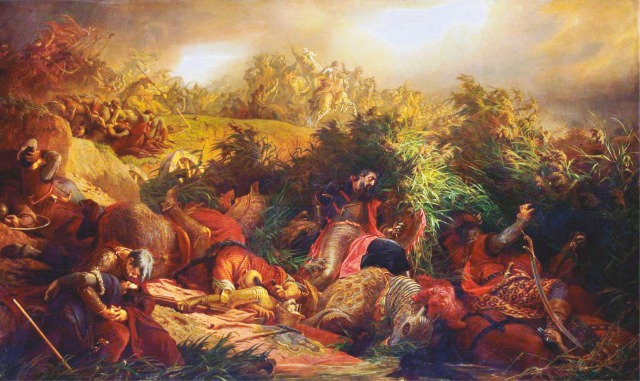
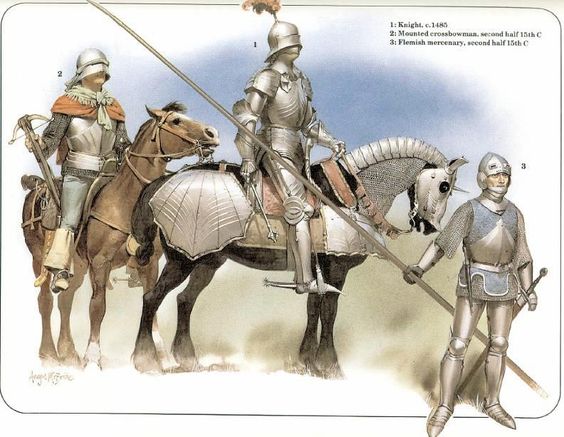

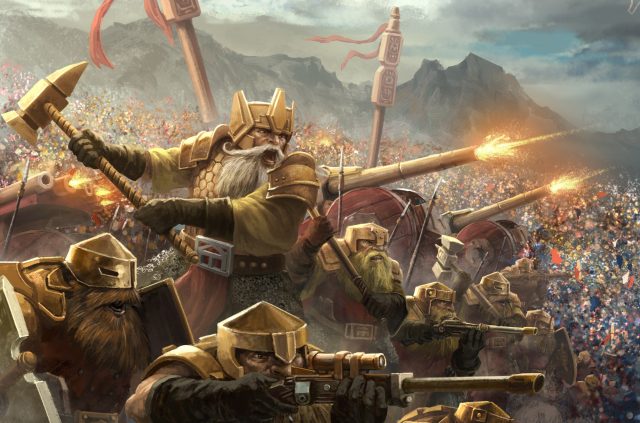
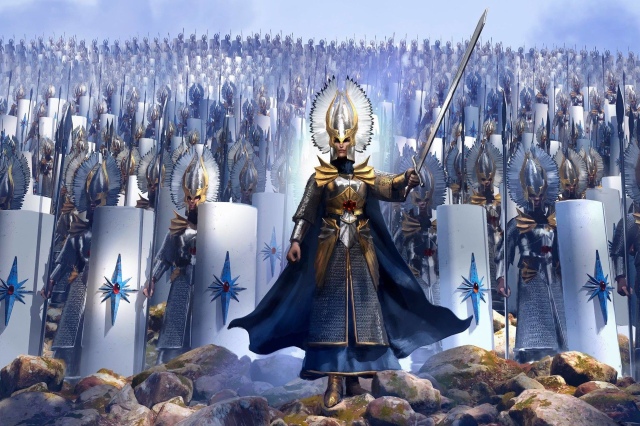
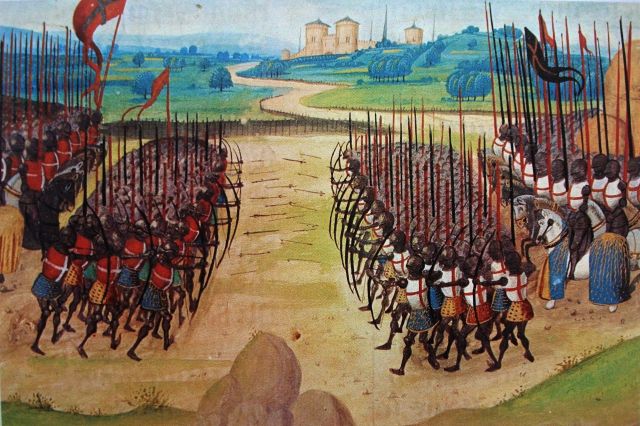
Pingback: Building a Fantasy Army Part 4: Organization | Archer's Aim